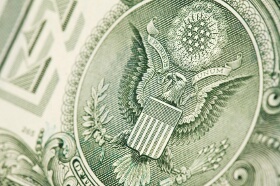The US dollar was demonstrating a lackluster performance until recently as the Federal Reserve kept its extremely accommodative monetary policy, while debt and budget issues made the safe haven role of the US currency highly questionable. Yet the Fed surprised the Forex market at the end of 2013, trimming its monetary stimulus. Does this mean that the greenback is ready to a surge upward in 2014? It is a possibility, but not a guarantee.
Fedâs quantitative easing tapering is indeed a major reason to be bullish on the dollar. Why is this so? Firstly, as it usually happens, smaller money supply means stronger currency as a direct result. Secondly, QE reduction also impacts the dollar indirectly as it increases risk aversion and volatility on the FX market, making traders seek safer currencies. Most economists believe that Fed will continue stimulus trimming after the central bank has started it. As a result, the outlook for the currency is positive and DailyFX said âconsider the bull trend firmly intactâ at least as prices stay above the December lows.
Are there reasons to worry about the US currency? Forex Crunch named several factors that can make dollarâs performance not as strong as one might expect. Firstly, the Fed made it clear that tapering is not tightening. Of course, tapering is still bullish for the greenback, but not as much as actual monetary tightening would be. Secondly, the political uncertainty in the United States is the major negative factor for the US currency. It is true, that politicians were able to avert actual default, but the problems were just postponed, not resolved and this is a very negative factor that may yet draw away investors from the dollar. Still, Forex Crunch expects that the dollar will be strong, especially in the second half of the year:
The firmer dollar dynamics are likely more in the second half, once tapering is more complete.
The key fact to remember is that currencyâs strength is not measured by itself, but in relation to other currencies. And it is expected that the dollar will continue to demonstrate different performance against different currencies. The greenback will likely remain strong against such currencies as the Japanese yen and the Australian dollar, which were soft in the previous year, but may struggle against the euro and the Great Britain pound. Overall though, analysts are bullish on the dollar and will keep such stance as long as the US economy will continue to show signs of recovery and the Fed will keep reducing its stimulus program.
If you have any questions, comments or opinions regarding the US Dollar,
feel free to post them using the commentary form below.
